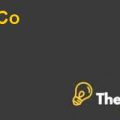Problem Diagnosis & Opportunities
The co-founders of the company, 1366 technologies, Ely Sachs and Frank van Mierlo, have a choice in order to place their company in a lea dining position in the world-wide solar industry. The first option available to the company is to expand its business operations in order to produce the silicon wafers itself and in order to do that, the management of the company would raise the required financing from the later stage growth equity investors or from the Department of energy. The manufacturing of the wafers would be done by the company in the United States and then it would export those wafers to the Asian cell manufactures.
On the other hand, the second option for 1366 Technologies was to go for a licensing agreement or a joint venture. Through this partnership approach, the company would rapidly gain scaling and it would also allow the Asian partners to lower their costs of production. The management of the company has always supported the accelerated growth however; the company might face significant risks if the intellectual property is exposed to the wrong partners. If the management of the company considers this option, it would lose its technology however, looking at the pace of innovation in the industry and the changes in the solar industry caused by the active involvement of the governments, Sachs and van Mierlo knew that they could not win the race by being cautious.
Critical Analysis
First of all, if we interpret the Levelized cost of energy (LCOE) comparison and its sensitivity against the fuel prices as provided in the exhibit 5b, then it could be seen that the PV solar is expensive as compared to many other forms of the renewable energy in most parts of the world. Therefore, it is guaranteed that the management of 1336 Technologies needs to find a way to build its competitive edge in the market with the established wafer technology or with the partnership approach or with fracking in order to achieve the set targets for grid parity.
This has been the target for almost all of the renewable power technologies. Furthermore, if we look at the graph of the share of China in the global module production, then it could be seen that from the year 2005 to 2009, the global module production share of China increased rapidly. As a result, this increased the shares in 2005 from 10% to 50% in the year 2009.
Furthermore, it is forecasted that about 80% of the solar cell manufacturing would be done in China over the next few years and due to that, it would become necessary for 1366 Technologies to partner with one of the well-connected local partners in order to open a plant in Asia. However, there would also be many risks associated with this option such as protecting the intellectual property in China as mentioned in case exhibit 7.
However, it seems that China as well as Japan would be more interested in Direct Wafer technology of the company and would also provide the company with series C round financing for establishing a production plant in China for about 250MV. It is evident from the case that the technology of 1336 would be highly important for the global silicon solar manufacturing chain and that its importance is going to increase over the upcoming years as companies seek new methods to reduce the costs and focus more on efficiency and in increasing the quality.
1366 Technologies Scaling the Venture (Abridged) Case Solution
By the end of the year 2010, the solar energy costs reduced to around $ 0.2 to $ 0.25 cents per kWh as seen in exhibit 3. The average selling prices for the wafers were about $ 0.65 to $ 0.7 cents per watt, which resulted in a profit margin of about 30% to 40%, however, this was forecasted to be increased more in the future as the scientists started to find more methods and other ways of using the less expensive materials. Therefore, the wafer technology of 1366 is really a big thing upon which it could build its competitive advantage in the global silicon cell manufacturing market.
Alternative Courses of Actions
As described previously, the owners of 1336 technologies had two alternative courses of actions, which are analyzed below with their respective pros and cons.
Option 1: Expand to produce Silicon Wafers
The first option for the co-founders of 1336 technologies is to take a go-it alone approach, and raise the required capital financing to support the manufacturing of its own wafers in the market and increase the share of the market. The required financing could be sought from the later-stage growth equity investors or from the department of energy.....................
This is just a sample partial case solution. Please place the order on the website to order your own originally done case solution.













